
Padre Island National Seashore: A Coastal Haven
Explore the untouched beauty of Padre Island National Seashore, a haven for wildlife and outdoor enthusiasts, offering pristine beaches, rich history, and clear night skies.
Padre Island National Seashore is a pristine stretch of barrier island off the coast of Texas. It is the longest undeveloped barrier island in the world. Here, you can enjoy miles of untouched beaches, dunes, and grasslands. The seashore is a haven for both wildlife and visitors looking to escape the hustle and bustle of city life. The park is home to more than 380 species of birds, making it a birdwatcher's paradise. You can also spot sea turtles, especially during the nesting season. The Laguna Madre, a shallow lagoon on the island’s western side, is one of the few hypersaline lagoons in the world. It is perfect for fishing and windsurfing. Outdoor enthusiasts will find plenty to do here. Camping, hiking, and beachcombing are popular activities. For those interested in history, the island has a rich past that includes tales of shipwrecks and pirates. You can explore the island's history through various interpretive programs and exhibits. Padre Island National Seashore is also a great place for star gazing. With minimal light pollution, the night sky is incredibly clear. Whether you are looking to relax on the beach, explore nature, or learn about the island’s history, Padre Island National Seashore offers something for everyone.
Local tips in Padre Island National Seashore
- Visit during the sea turtle nesting season for a chance to see baby turtles hatch and make their way to the ocean.
- Bring plenty of water and sunscreen, as there are limited facilities on the island.
- Check the weather forecast and tide schedules before planning your visit, as conditions can change rapidly.
- For the best birdwatching experience, visit during the migratory seasons in spring and fall.
- Camping spots are popular, so make reservations in advance if you plan to stay overnight.
Padre Island National Seashore: A Coastal Haven
Padre Island National Seashore is a pristine stretch of barrier island off the coast of Texas. It is the longest undeveloped barrier island in the world. Here, you can enjoy miles of untouched beaches, dunes, and grasslands. The seashore is a haven for both wildlife and visitors looking to escape the hustle and bustle of city life. The park is home to more than 380 species of birds, making it a birdwatcher's paradise. You can also spot sea turtles, especially during the nesting season. The Laguna Madre, a shallow lagoon on the island’s western side, is one of the few hypersaline lagoons in the world. It is perfect for fishing and windsurfing. Outdoor enthusiasts will find plenty to do here. Camping, hiking, and beachcombing are popular activities. For those interested in history, the island has a rich past that includes tales of shipwrecks and pirates. You can explore the island's history through various interpretive programs and exhibits. Padre Island National Seashore is also a great place for star gazing. With minimal light pollution, the night sky is incredibly clear. Whether you are looking to relax on the beach, explore nature, or learn about the island’s history, Padre Island National Seashore offers something for everyone.
When is the best time to go to Padre Island National Seashore?
Iconic landmarks you can’t miss
The Original Dolphin Watch
Embark on an unforgettable dolphin watching adventure at The Original Dolphin Watch, where nature's beauty meets thrilling experiences on South Padre Island.
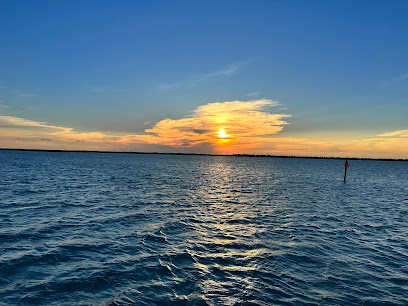
Port Isabel Lighthouse State Historic Site
Discover the historic charm and breathtaking views at Port Isabel Lighthouse, a must-visit landmark on the Texas Gulf Coast.

Padre Balli Park
Explore Padre Balli Park, a coastal gem in Corpus Christi, offering scenic beauty, recreational activities, and abundant wildlife encounters.

Andy Bowie County Park
Explore the natural beauty and recreational opportunities at Andy Bowie County Park in South Padre Island, Texas, your perfect beach getaway.

North Padre Seawall
Experience the beauty of North Padre Seawall, a public beach in Corpus Christi, Texas, perfect for relaxation and beach activities.

Jesus Christ of the Fisherman Statue
Discover the stunning Jesus Christ of the Fisherman Statue on South Padre Island, where faith meets breathtaking coastal beauty.

Padre Island National Seashore - Malaquite Visitor Center
Explore the natural beauty and wildlife of Padre Island National Seashore at the Malaquite Visitor Center, your gateway to adventure on the Texas coastline.

Packery Channel Park
Experience the serene beauty and recreational fun at Packery Channel Park, a coastal paradise in Corpus Christi, Texas.

Laguna Madre Nature Trail
Explore the breathtaking beauty of Laguna Madre Nature Trail, a serene escape into South Padre Island's vibrant ecosystem with stunning wildlife and landscapes.

Malaquite Beach
Experience the beauty of Malaquite Beach in Corpus Christi, Texas, where pristine sands meet crystal-clear waters in a tranquil coastal paradise.

Statue of Padre Jose Nicolas Balli
Discover the Statue of Padre Jose Nicolas Balli, a historical landmark on South Padre Island that celebrates the rich culture and heritage of Texas.

The Pilings
Explore The Pilings in Corpus Christi, Texas - a stunning coastal attraction offering picturesque views and a glimpse into local marine life.

Bird Island Basin
Explore the tranquil Bird Island Basin, a birdwatcher's paradise nestled in Padre Island National Seashore, Texas, offering stunning sunsets and pristine nature.

Grasslands Nature Trail
Experience the natural beauty and tranquility of Grasslands Nature Trail, a scenic hiking area in Corpus Christi, Texas, perfect for nature lovers and outdoor enthusiasts.

National seashore
Explore the untouched beauty of Padre Island National Seashore, Texas—a coastal paradise for nature lovers and beach enthusiasts alike.

Unmissable attractions to see
Mustang Island State Park
Experience the stunning beaches and diverse ecosystems of Mustang Island State Park, a natural gem perfect for outdoor adventures in Texas.

Beach Waterpark
Experience a day of excitement and relaxation at Beach Waterpark on South Padre Island, a top destination for water lovers and families alike.

The Original Dolphin Watch
Discover the wonders of the ocean and witness dolphins frolicking in their natural habitat with The Original Dolphin Watch in South Padre Island.

Port Isabel Lighthouse State Historic Site
Explore the historic Port Isabel Lighthouse, a beacon of maritime history with breathtaking views and rich cultural heritage on the Texas Gulf Coast.

Padre Balli Park
Experience the serene beauty and recreational opportunities at Padre Balli Park, a coastal gem in Corpus Christi, Texas, perfect for nature lovers and families alike.
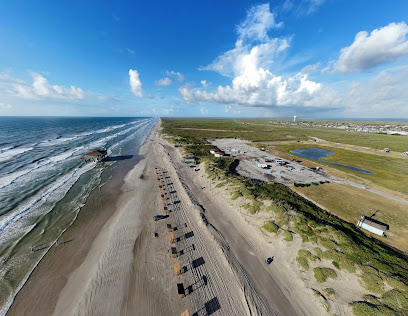
Gravity Park
Discover the excitement of Gravity Park in South Padre Island, an amusement park filled with thrilling rides and fun for all ages.

Andy Bowie County Park
Experience the natural beauty and recreational wonders of Andy Bowie County Park, a coastal paradise in South Padre Island, Texas.

North Padre Seawall
Experience the serene beauty of North Padre Seawall, a tranquil public beach in Corpus Christi, Texas, ideal for relaxation and recreation.
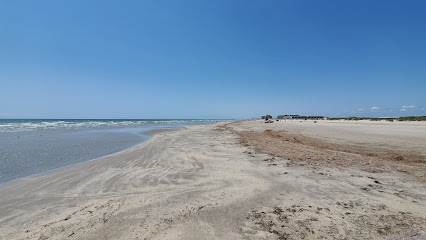
Breakaway Cruises
Discover the beauty of South Padre Island through thrilling boat tours and unforgettable dolphin encounters with Breakaway Cruises.

Horses on the Beach
Discover the thrill of horseback riding along the beautiful beaches of Corpus Christi at Horses on the Beach - a unique adventure awaits!

Jesus Christ of the Fisherman Statue
Explore the serene beauty and spiritual significance of the Jesus Christ of the Fisherman Statue in South Padre Island, Texas.

Texas Sealife Center
Explore the Texas Sealife Center: A captivating marine sanctuary showcasing the Gulf Coast's diverse marine life and conservation efforts.

Padre Island National Seashore - Malaquite Visitor Center
Experience the pristine beauty and ecological diversity of Padre Island National Seashore at the Malaquite Visitor Center, your gateway to adventure on the Texas coast.

JP Luby Beach
Discover the sun-kissed shores of JP Luby Beach, a beautiful public beach on Padre Island, perfect for relaxation and beachside fun in Corpus Christi.

Packery Channel Park
Explore Packery Channel Park in Corpus Christi, a serene destination for nature lovers, featuring beautiful views, diverse wildlife, and various recreational activities.

Essential places to dine
Blackbeards'
Discover fresh seafood delights at Blackbeards', where vibrant flavors meet a lively coastal atmosphere in South Padre Island.

Doc's Seafood and Steaks
Experience the best seafood and steaks at Doc's Seafood and Steaks in Corpus Christi – where flavor meets coastal charm.

Louie's Backyard
Discover Louie's Backyard: A premier seafood restaurant and vibrant nightlife spot on South Padre Island offering stunning views and live entertainment.

Snoopy's Pier
Experience fresh seafood with stunning waterfront views at Snoopy's Pier in Corpus Christi.

Dirty Al's
Indulge in fresh seafood at Dirty Al's in South Padre Island—where every bite tells a story of oceanic delight.
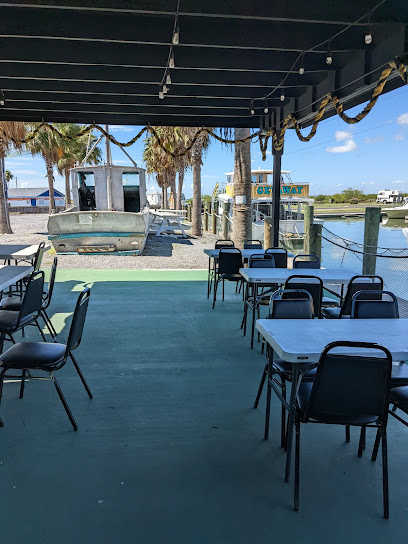
Padre Island Burger Company
Discover delicious burgers and American cuisine at Padre Island Burger Company on beautiful Padre Island.

Wanna Wanna Inn Beach Bar & Grill
Experience coastal dining at its best at Wanna Wanna Inn Beach Bar & Grill – where great food meets stunning ocean views on South Padre Island.

Gabriella's
Experience authentic Italian cuisine with fresh seafood at Gabriella's on South Padre Island - where every meal is a delicious celebration.

LongBoard Bar and Grill
Discover culinary delights at LongBoard Bar and Grill on South Padre Island - where great food meets vibrant entertainment.

Padre Island Brewing Co
Experience the best of craft brewing at Padre Island Brewing Co, where delicious food meets exceptional local beers in South Padre Island.

Sea Ranch Restaurant
Experience exquisite seafood dining with breathtaking views at Sea Ranch Restaurant on South Padre Island.

Tom and Jerry's
Experience mouthwatering dishes at Tom and Jerry's on South Padre Island – your go-to grill for American classics, seafood, and Tex-Mex delights.

Cafe On The Beach
Savor coastal delights at Cafe On The Beach – your go-to spot for delicious New American cuisine on South Padre Island.

Laguna BOB
Discover Laguna BOB: Where fresh seafood meets New American cuisine on beautiful South Padre Island.

Tequila Sunset Bar & Grill
Experience delicious grilled cuisine and live music at Tequila Sunset Bar & Grill on South Padre Island - where every meal is a celebration!

Markets, malls and hidden boutiques
Padre Island National Seashore
Explore the pristine beaches and diverse ecosystems of Padre Island National Seashore, a natural haven along the Texas coast.

Dillard's
Explore Dillard's in Corpus Christi for an exquisite shopping experience with a wide selection of fashion, cosmetics, and home goods.

South Padre Island KOA Holiday
Discover the perfect getaway at South Padre Island KOA Holiday, where nature meets comfort on the beautiful Texas coast.
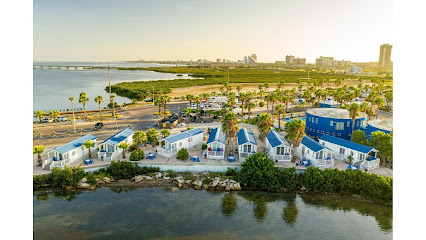
Ocean Treasures
Discover unique souvenirs at Ocean Treasures on Padre Island, where local art meets coastal charm for an unforgettable shopping experience.

Padre Islander & Island Sports
Discover unique souvenirs and beach clothing at Padre Islander & Island Sports, the perfect shopping destination on Padre Island, Texas.
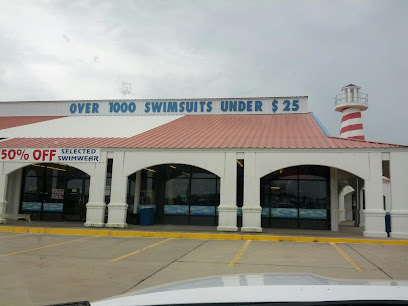
Third Coast Beach Co
Discover trendy swimwear and beach apparel at Third Coast Beach Co in Corpus Christi, your ultimate shopping destination for sun and surf.
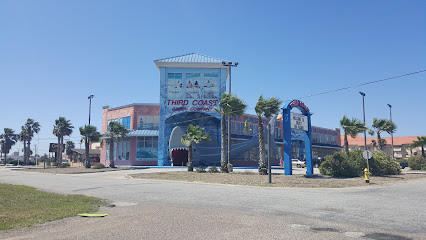
Jaws Beachworld
Discover the ultimate beachwear haven at Jaws Beachworld in South Padre Island, offering trendy swimwear and accessories for your coastal adventures.

Padre Island National Seashore - Malaquite Visitor Center
Explore the beauty and biodiversity of Padre Island National Seashore at the Malaquite Visitor Center, your gateway to unforgettable coastal adventures.

Blue Skies
Explore Blue Skies Souvenir Store for unique gifts and local treasures that capture the spirit of South Padre Island.

Dollar General
Explore Dollar General on Padre Island for affordable essentials, local treats, and a welcoming shopping experience that enhances your travel adventure.

On The Beach
Discover surf gear and beach apparel that capture the spirit of South Padre Island at On The Beach, your go-to surf shop for coastal adventures.

Oxygen Gift Shop
Explore the vibrant Oxygen Gift Shop in South Padre Island for unique beachwear and souvenirs that capture the spirit of your vacation.
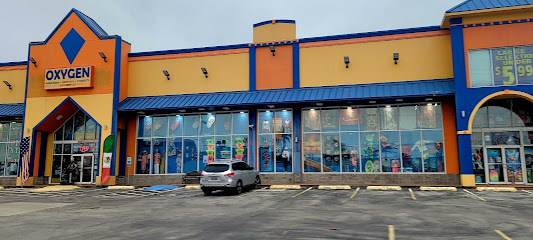
B & S Kites
Explore the vibrant world of kites at B & S Kites on South Padre Island, where adventure and fun await for all ages.

Ship Shape
Explore Ship Shape on South Padre Island for unique gifts and souvenirs that capture the island's spirit and culture.

Ocean Motion
Discover the ultimate beachwear destination at Ocean Motion on South Padre Island, where style meets the sun and sea.
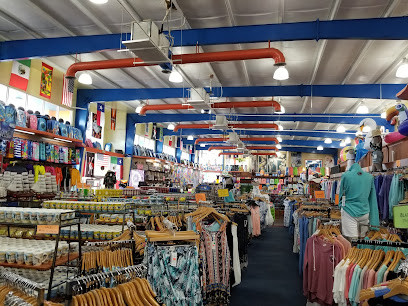
Essential bars & hidden hideouts
Clayton's Beach Bar & Event Venue
Experience the vibrant atmosphere and delicious seafood at Clayton's Beach Bar & Event Venue, your ultimate destination in South Padre Island.

Doc's Seafood and Steaks
Experience fresh seafood and mouthwatering steaks at Doc's Seafood and Steaks, a premier dining destination on Padre Island, Corpus Christi.

Louie's Backyard
Discover the lively atmosphere of Louie's Backyard, a premier restaurant and entertainment venue on South Padre Island, offering seafood, live music, and stunning waterfront views.

Snoopy's Pier
Experience the best of Texas coastal dining at Snoopy's Pier, where fresh seafood meets stunning Gulf views.

Dirty Al's
Dirty Al's in South Padre Island: A seafood haven offering fresh dishes and a lively bar atmosphere for an unforgettable dining experience.

Padre Island Burger Company
Discover the delicious burgers and laid-back vibe at Padre Island Burger Company, a top destination for food lovers on the Texas coast.

Wanna Wanna Inn Beach Bar & Grill
Experience the vibrant atmosphere and delicious cuisine at Wanna Wanna Inn Beach Bar & Grill in South Padre Island - a perfect blend of beach fun and culinary delights.

LongBoard Bar and Grill
Discover the vibrant dining experience at LongBoard Bar and Grill, offering delicious food, live music, and a lively atmosphere in South Padre Island.

Padre Island Brewing Co
Discover the best of craft brewing and coastal cuisine at Padre Island Brewing Co, a vibrant brewpub in South Padre Island, Texas.
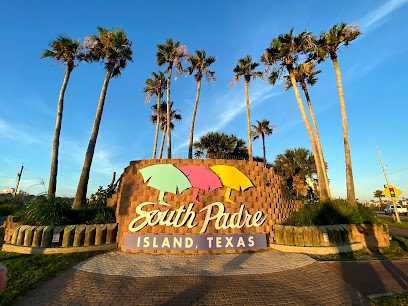
Sea Ranch Restaurant
Experience the best of seafood dining on South Padre Island at Sea Ranch Restaurant, where fresh flavors meet stunning ocean views.
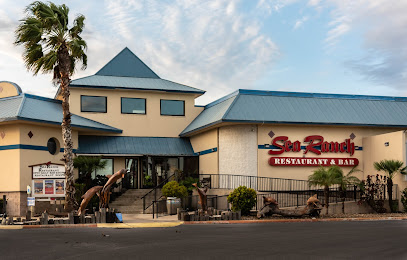
Tom and Jerry's
Experience the vibrant flavors of Texas at Tom and Jerry's, a family-friendly grill and bar on South Padre Island offering American and Tex-Mex delights.

Laguna BOB
Discover Laguna BOB, the ultimate grill and seafood destination on South Padre Island, offering fresh flavors and a vibrant dining experience.

Tequila Sunset Bar & Grill
Experience unforgettable sunsets, delicious grilled dishes, and vibrant live music at Tequila Sunset Bar & Grill in South Padre Island.

Liam's Steak House & Oyster Bar
Experience the finest in steak and seafood dining at Liam's Steak House & Oyster Bar, where every meal is a celebration of flavor and hospitality.

Kellys Irish Pub
Discover Kelly's Irish Pub in South Padre Island for a perfect blend of Irish charm and American flavors, all in a vibrant, friendly atmosphere.

Local Phrases about Padre Island National Seashore
-
- HelloHowdy
[haw-dee] - GoodbyeSee ya
[see yuh] - YesYep
[yep] - NoNope
[nohp] - Please/You're welcomePlease/No worries
[pleez/noh wur-eez] - Thank youThanks
[thanks] - Excuse me/SorryPardon me/My bad
[par-dun mee/my bad] - How are you?Howdy, how ya doin'?
[haw-dee, how yuh doo-in] - Fine. And you?All good. You?
[awl good. yoo?] - Do you speak English?Ya speak English?
[yah speak ing-glish?] - I don't understandDon't get it
[dohnt get it]
- HelloHowdy
-
- I'd like to see the menu, pleaseCan I see the menu, please
[kan eye see thee men-yoo, pleez] - I don't eat meatI don't eat meat
[eye dohnt eet meet] - Cheers!Cheers!
[cheers!] - I would like to pay, pleaseCan I pay, please
[kan eye pay, pleez]
- I'd like to see the menu, pleaseCan I see the menu, please
-
- Help!Help!
[help!] - Go away!Get outta here!
[get out-tuh here] - Call the Police!Call the cops!
[call thee cops] - Call a doctor!Get a doc!
[get uh doc] - I'm lostI'm lost
[im lost] - I'm illI'm not feelin' well
[im not fee-lin well]
- Help!Help!
-
- I'd like to buy...I wanna buy...
[eye wahn-uh buy] - I'm just lookingJust looking
[just look-in] - How much is it?How much does it cost?
[how much duhz it cost] - That's too expensiveThat's too pricey
[thats too prye-see] - Can you lower the price?Can ya make it cheaper?
[kan yuh make it chee-per]
- I'd like to buy...I wanna buy...
-
- What time is it?What time is it?
[what time iz it] - It's one o'clockIt's one o'clock
[its wun o-clock] - Half past (10)Half past (10)
[haff past (ten)] - MorningMornin'
[morn-in] - AfternoonAfternoon
[after-noon] - EveningEvenin'
[even-in] - YesterdayYesterday
[yes-ter-day] - TodayToday
[toh-day] - TomorrowTomorrow
[toh-mor-row] - 1One
[wun] - 2Two
[too] - 3Three
[three] - 4Four
[four] - 5Five
[five] - 6Six
[six] - 7Seven
[sev-en] - 8Eight
[ayt] - 9Nine
[nine] - 10Ten
[ten]
- What time is it?What time is it?
-
- Where's a/the...?Where's the...?
[wheres thee] - What's the address?What's the address?
[whats thee ad-dress] - Can you show me (on the map)?Can ya show me (on the map)?
[kan yuh show me (on thee map)] - When's the next (bus)?When's the next (bus)?
[whens thee next (bus)] - A ticket (to ....)A ticket (to ....)
[uh ticket (to)]
- Where's a/the...?Where's the...?
History of Padre Island National Seashore
-
Long before European explorers set foot on Padre Island, it was inhabited by various indigenous tribes, notably the Karankawa. These Native American tribes relied on the island’s rich marine resources, hunting and gathering shellfish, fish, and other coastal resources for sustenance. Evidence of their presence includes shell middens and various artifacts scattered across the island.
-
In the early 16th century, Spanish explorers, including Alonso Álvarez de Pineda and Cabeza de Vaca, navigated the Gulf Coast, marking the beginning of European interaction with Padre Island. These explorations led to the mapping of the Texas coastline and eventual Spanish claims over the territory.
-
Padre Island is notorious for its shipwrecks, particularly from the Spanish colonial era. In 1554, three Spanish galleons, the San Esteban, the Espíritu Santo, and the Santa María de Yciar, were shipwrecked off the coast of Padre Island during a storm. These shipwrecks have yielded numerous artifacts, including coins, pottery, and weapons, shedding light on the island's role in maritime history.
-
The island has a colorful history of pirate activity, with legends suggesting that famous buccaneers such as Jean Lafitte used Padre Island as a hideout in the early 19th century. Tales of buried treasure and pirate lore continue to intrigue visitors and contribute to the island’s mystique.
-
In the 19th century, Padre Island saw the rise of ranching activities. The most notable rancher was Patrick Dunn, known as the 'King of Padre Island.' Dunn and others introduced cattle and sheep ranching, which became a significant economic activity on the island, altering its landscape and culture.
-
During World War II, Padre Island served a strategic military role. The U.S. government established a radar station and used the island for training exercises, including amphibious landings. These activities left behind remnants like bunkers and other military installations, some of which can still be seen today.
-
In 1962, President John F. Kennedy signed legislation establishing Padre Island National Seashore, protecting over 70 miles of coastline and preserving its natural and cultural resources. The creation of the National Seashore marked a significant shift towards conservation and public enjoyment of this unique barrier island.
Padre Island National Seashore Essentials
-
Padre Island National Seashore is located along the coast of South Texas, approximately 25 miles southeast of Corpus Christi. The nearest major airport is Corpus Christi International Airport (CRP), which is about a 45-minute drive from the park entrance. From the airport, you can rent a car or take a taxi to reach the seashore. If you are driving from other parts of Texas, take Interstate 37 to Corpus Christi and then follow Highway 358 (South Padre Island Drive) to Park Road 22, which leads directly to the park.
-
The best way to explore Padre Island National Seashore is by car, as public transportation options are limited. Rental cars are available at Corpus Christi International Airport and in the city of Corpus Christi. Within the park, you can drive on the beach in designated areas, but a four-wheel-drive vehicle is recommended for driving on sand. Bicycles are also allowed on some trails and roads. There are no public buses or shuttles operating within the park.
-
The official currency is the United States Dollar (USD). Credit and debit cards are widely accepted in Corpus Christi and at the park's visitor center. However, it is advisable to carry some cash, especially if you plan to purchase items from local vendors or need to pay for services like parking in remote areas. ATMs are available in Corpus Christi, but there are no ATMs within the park itself.
-
Padre Island National Seashore is generally a safe destination for tourists. However, it is important to take standard safety precautions. Avoid leaving valuables in your vehicle, especially in visible areas. Stay informed about weather conditions, as the coastal area is prone to sudden changes. There are no high-crime areas within the park, but it is always best to stay vigilant, especially in isolated areas. Be aware of wildlife and adhere to park regulations to ensure your safety.
-
In case of an emergency, dial 911 for immediate assistance. The park has a ranger station where you can report emergencies and get help. It is recommended to have travel insurance that covers medical emergencies, as the nearest hospitals are in Corpus Christi. For minor health issues, there are first-aid supplies available at the visitor center. Always carry a basic first-aid kit with you, especially if you plan to go hiking or camping.
-
Fashion: Do wear comfortable, weather-appropriate clothing, including sun protection such as hats and sunscreen. Avoid wearing overly revealing swimwear when not on the beach. Religion: Do respect the natural environment, as the park is a protected area. Public Transport: Do follow all park rules and regulations; there is no public transport within the park. Greetings: Do greet park staff and other visitors politely. A simple 'hello' or a nod is sufficient. Eating & Drinking: Do pack out all trash and leftovers to keep the park clean. Don't feed wildlife, as this can be harmful to the animals.
-
To experience Padre Island National Seashore like a local, visit during the off-peak seasons to avoid crowds. Early morning and late afternoon are the best times for birdwatching, as the park is on a major migratory bird route. Participate in ranger-led programs to learn more about the local ecosystem and history. Bring your own kayak or paddleboard to explore the Laguna Madre, a unique hypersaline lagoon. Don't miss the opportunity to see a Kemp's ridley sea turtle release if you visit during the nesting season.
Trending Landmarks in Padre Island National Seashore
-
The Original Dolphin Watch
-
Port Isabel Lighthouse State Historic Site
-
Padre Balli Park
-
Andy Bowie County Park
-
North Padre Seawall
-
Jesus Christ of the Fisherman Statue
-
Padre Island National Seashore - Malaquite Visitor Center
-
Packery Channel Park
-
Laguna Madre Nature Trail
-
Malaquite Beach
-
Statue of Padre Jose Nicolas Balli
-
The Pilings
-
Bird Island Basin
-
Grasslands Nature Trail
-
National seashore
Nearby Cities to Padre Island National Seashore
-
Things To Do in Port Aransas
-
Things To Do in South Padre Island
-
Things To Do in McAllen
-
Things To Do in Brownsville
-
Things To Do in Matamoros
-
Things To Do in Laredo
-
Things To Do in New Braunfels
-
Things To Do in Sugar Land
-
Things To Do in Monterrey
-
Things To Do in Galveston
-
Things To Do in Austin
-
Things To Do in Houston
-
Things To Do in Fredericksburg
-
Things To Do in The Woodlands
-
Things To Do in College Station











